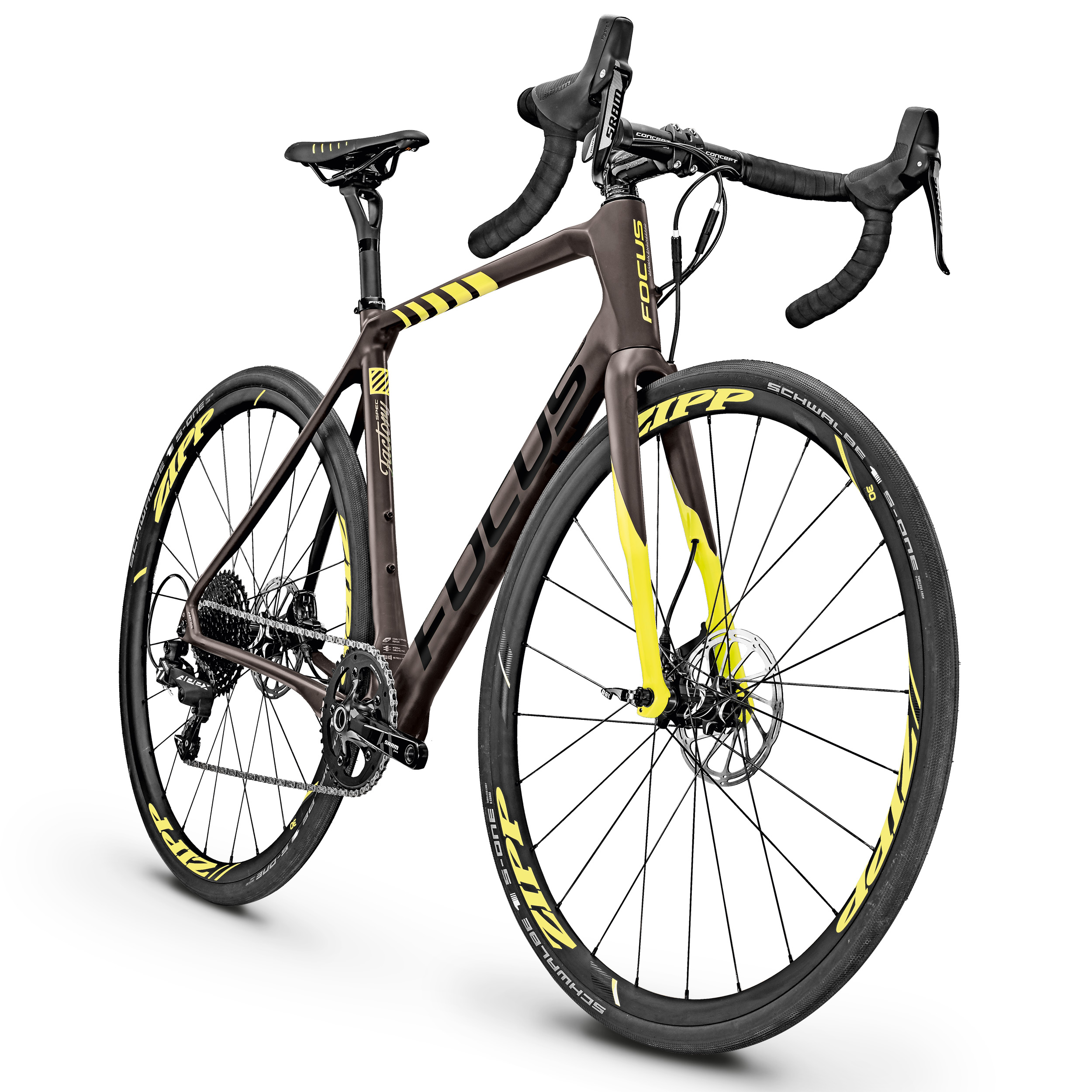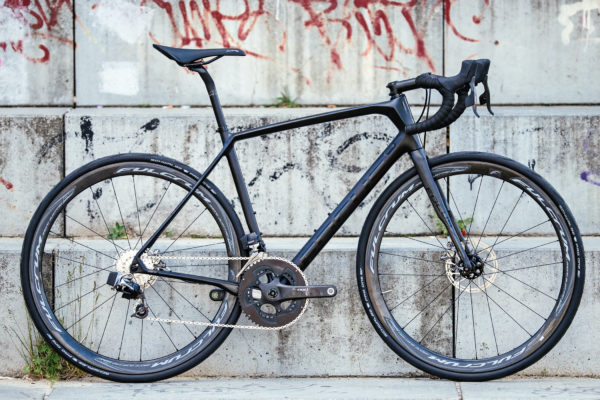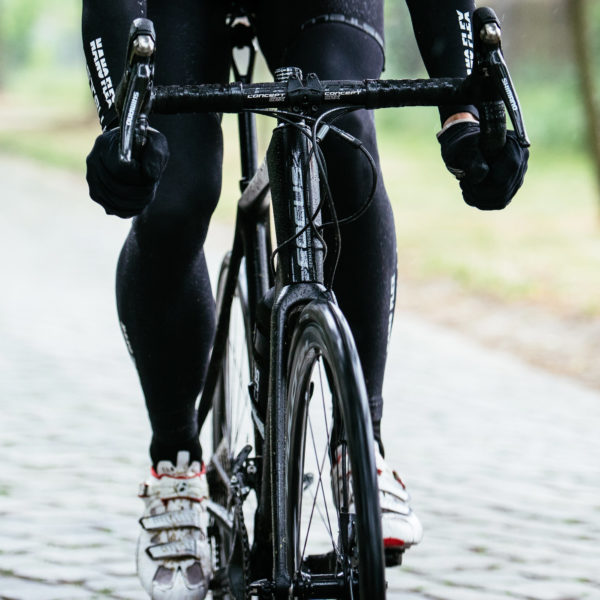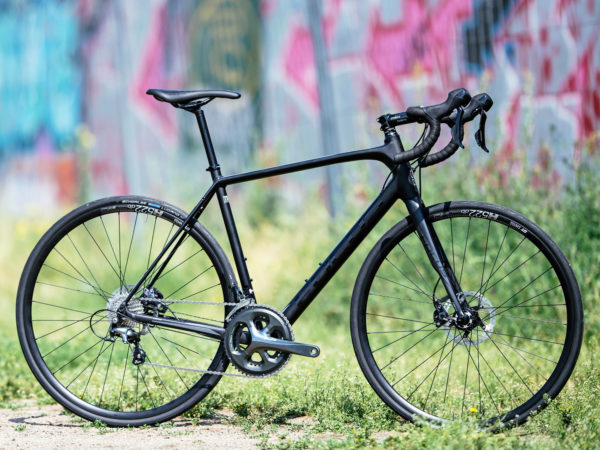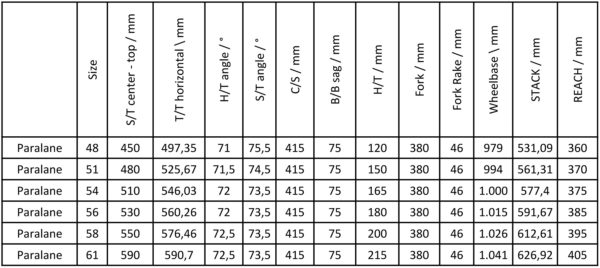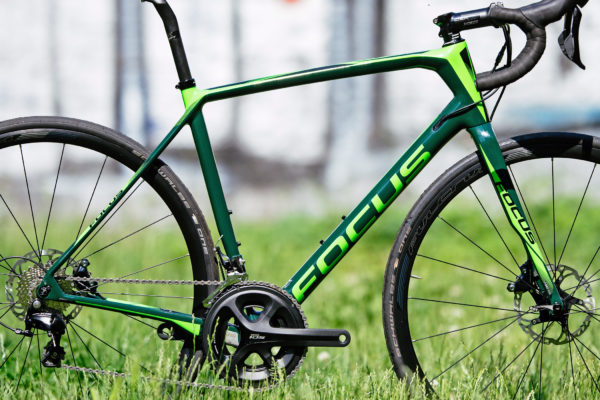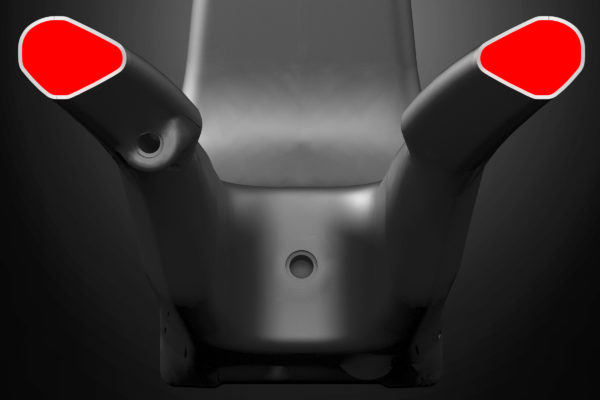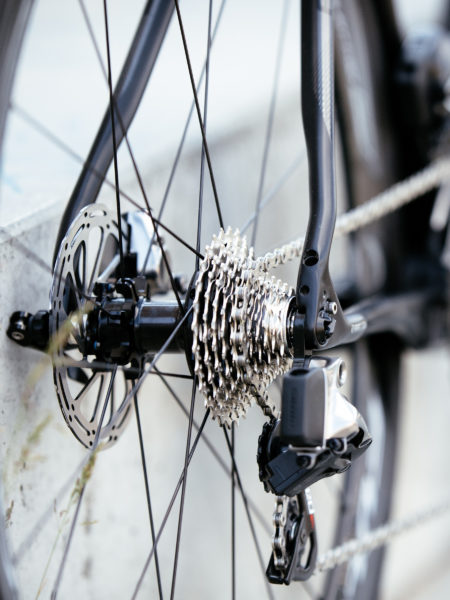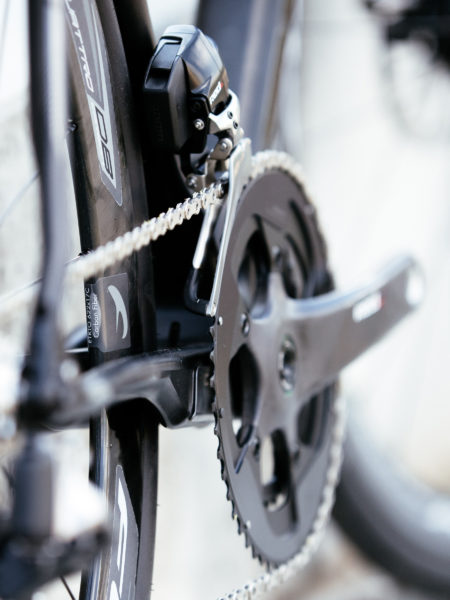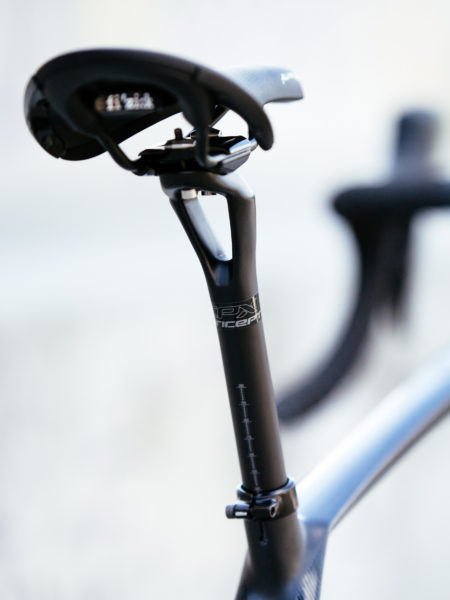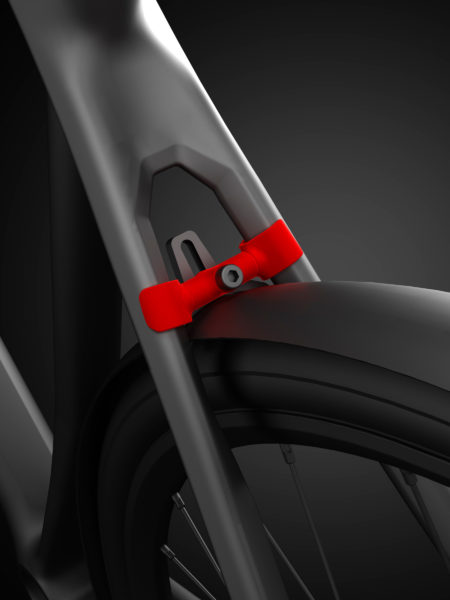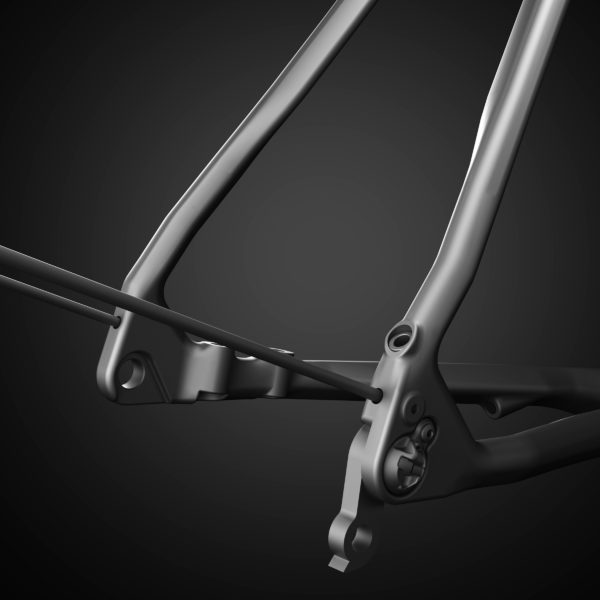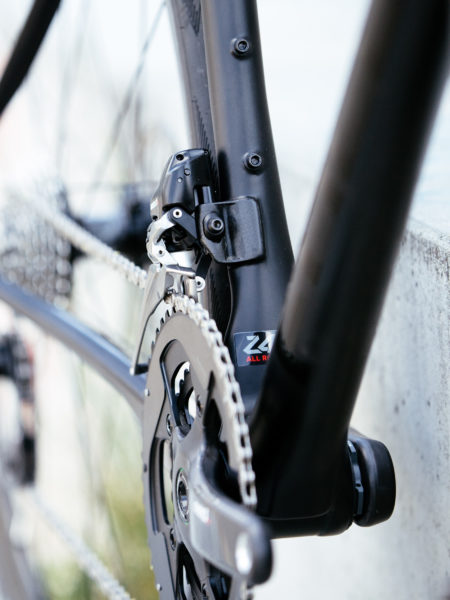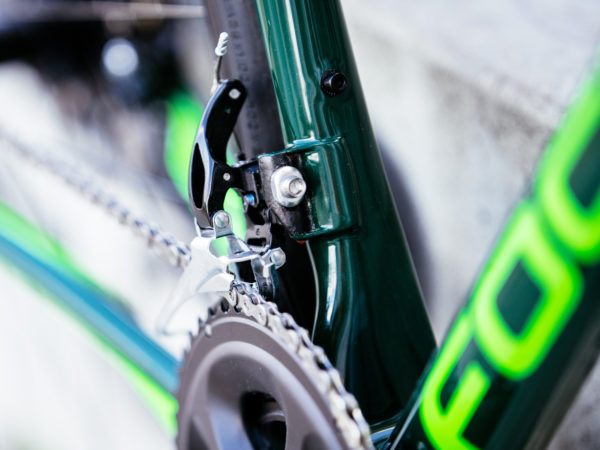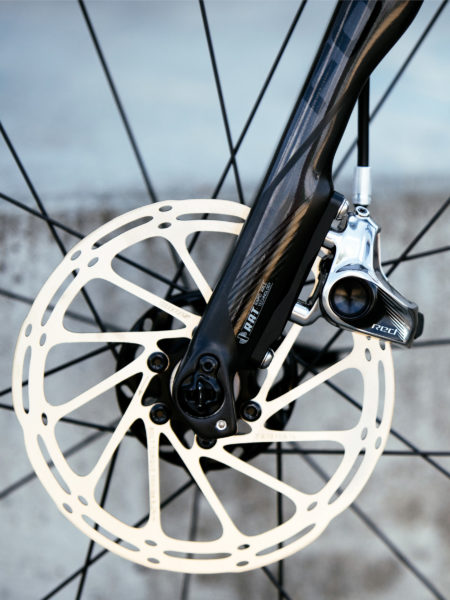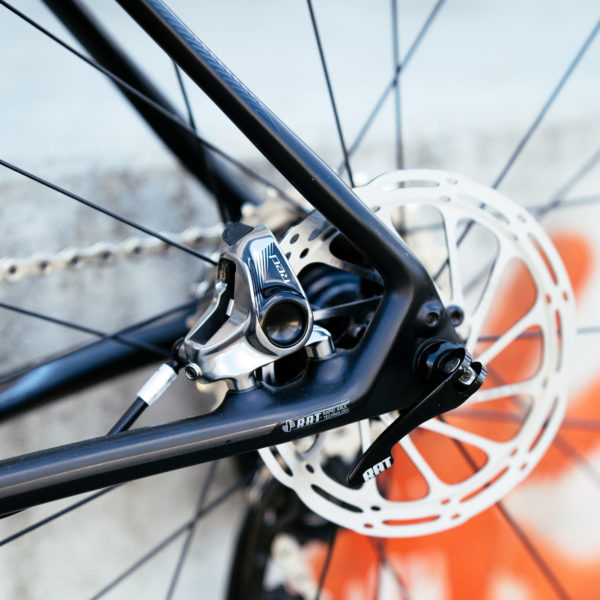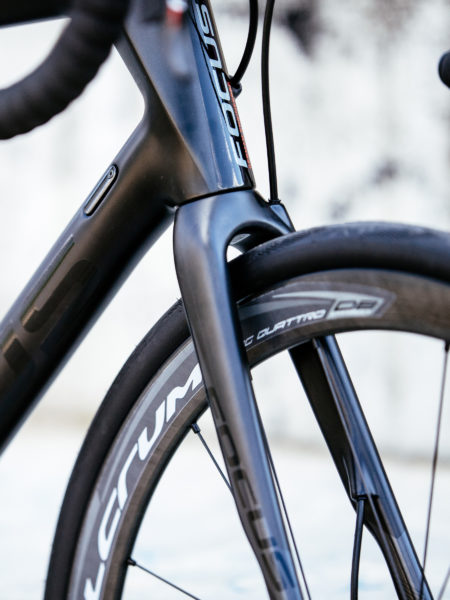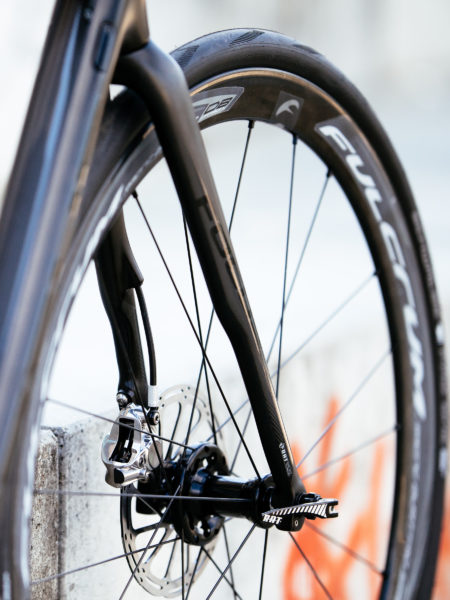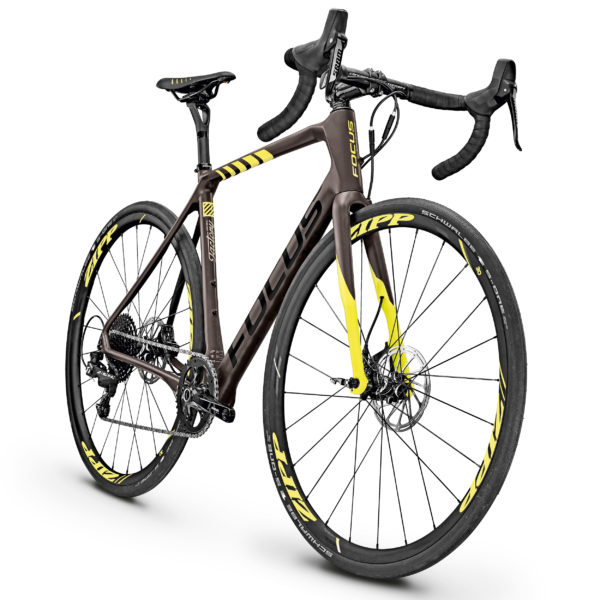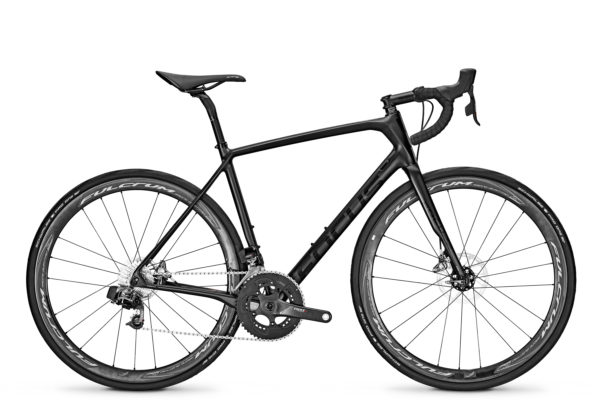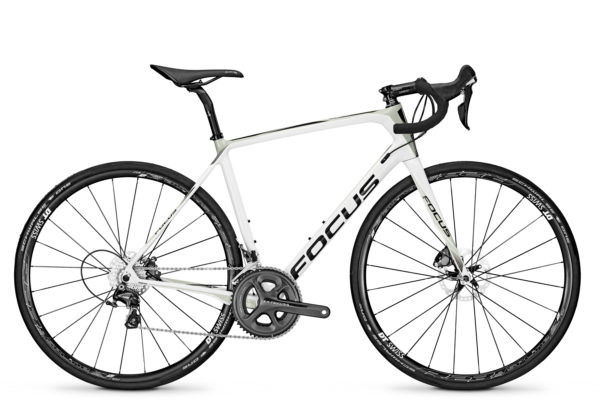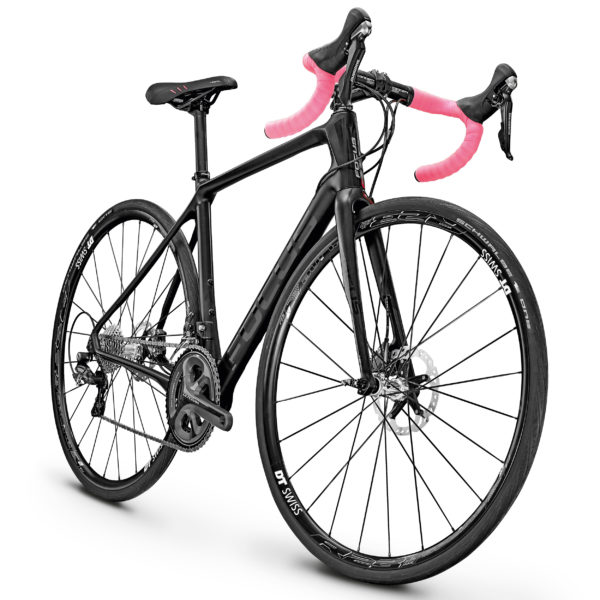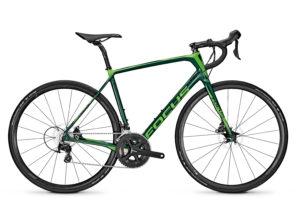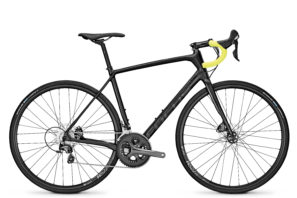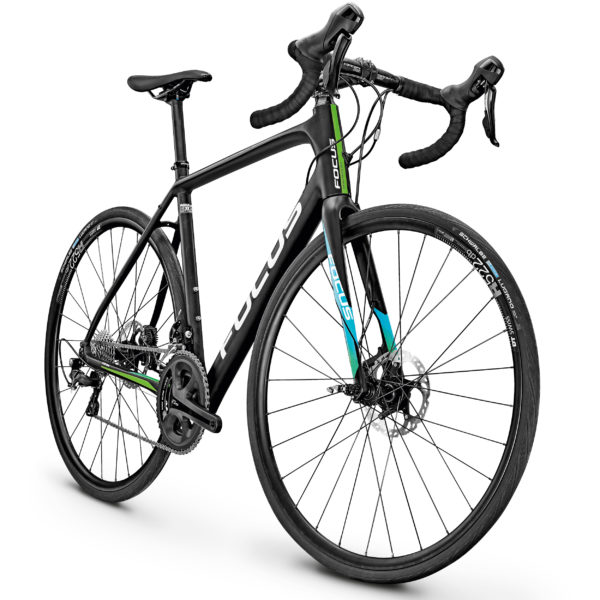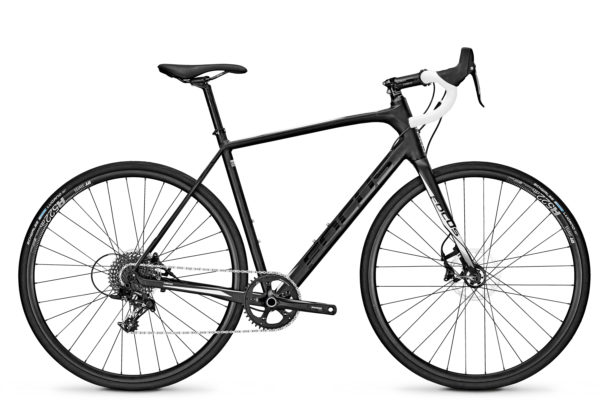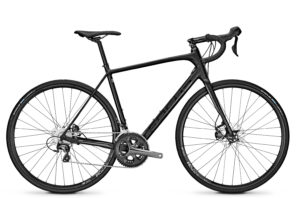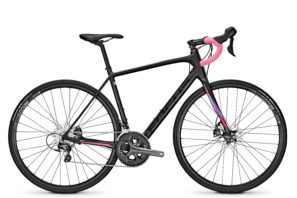Focus was one of the first production companies to make performance-focused disc brake road racing bikes available with their Cayo Disc series introduced a few years back, and then again with the Izalco Max Disc in this year’s current line-up. Both of those bikes offer fits and geometries on par with their corresponding top end rim brake race brethren, with the slightly increased wheelbases needed to accommodate the wider rear axle standard that came with disc brakes. Even with added clearance and more confident braking those two bikes are destined to spend most of their time on tarmac.
With pure disc brake race bikes under their belt, Focus’ development team took the task of building a race version of an endurance bike – the new Paralane – that could take riders on adventures that strayed away from the road. The idea was to build off the lessons learned on smooth asphalt and carry those over to the rougher surfaces, gravel roads, and dirt tracks so that riders could be comfortable in all day races over any type of road surface. The resulting race-oriented endurance road bike would then be equally at home heading to ride a Northern European Spring Classics sportive or spending a weekend exploring dirt roads close to home. And to do that Focus developed separate aluminum and carbon frames so their new Paralane could be attainable at any price point. Get into the full details of the next new European gravel endurance bike after the break…
To start to look at how to build a bike for the growing Endurance Road category, Focus says that they sent their team out to see how amateur racers actually positioned themselves on the bike. They found what we all probably already know: a lot of racers go for a #slamyourstem position to get their backs flat and as aero as possible, but the bulk of the remaining serious riders have a slightly more upright position that is easier and more comfortable to sustain for long rides. That was the position that would form the base of the new endurance bike.
To get that fit the Paralane tries to bring a more stable and comfortable geometry than the Cayo and Izalco before it. While the Cayo already grew the stack a bit over the Izalco, the new Paralane goes even higher bringing the bars up another 3cm (for most sizes). Then the bars go back; for the same size Paralane, frame reach decreases 25mm. Both of those steps is essentially the same change as you would get in moving up or down two size increments which results in the Paralane having a much more upright riding position.
In order to still keep overall quick handling, the Paralane generally sticks with 72°/73.5° head/seat angles. And it drops its bottom bracket 5mm to lower center of gravity and limit the effects a bit of the taller stack. With 1cm added to the fork length, it also stretches the wheelbase a bit, while keeping the same short 415mm chainstays (that are pretty much the lower limit for a 12×142 rear end), of the disc version of the pure race bikes.
In keeping the idea of creating an amateur endurance race bike, Focus still delivered on low weight. Building in the carbon engineering of their top Izalco Max and Raven Max frames, this new Paralane is another example of ready-for-anything light weigh at just 907g claimed for a size 54cm with paint and all of its small parts like the derailleur hanger, seat clamp, and such.
Focus spent a lot of time and FEA analysis in developing a wide range of shaped tubing and transitions throughout the frameset designed to absorb forces from riding over rough roads and generally smooth out the ride. The key areas that got focused on were stays and the seattube as we’ve seen in many bikes. For both chain and seatstay, Focus’ analysis led them to flat-ish elliptical cross sections that were larger away from the center for more lateral stiffness, but relatively shallow overall to soak up the bumps.
The chainstays also get a quick taper from just behind the bottom bracket that is meant to limit any flexibility to closer to the rear axle. The lower part of the seattube then also is flattened dramatically just above the bottom bracket to act a bit like a hinge, so the flex in the rear triangle happens in the seattube, and the chainstay deflect less ensuring efficient pedaling and power transfer. This borrows tech heavily from the Raven Max hardtail mountain bike we spied last spring and then saw in more detail at Eurobike.
To add more comfort where the bike hits the butt, Focus has gone with a very small 25.4mm seatpost diameter to allow even more tuned flex. To give riders the best balance of stiffness to comfort, Focus made a version of their hollow middle CPX Plus carbon seatpost to fit the smaller size that promises vertical flex without torsional flex.
Since they expect the Paralane to see more foul weather use than some of their race bikes, Focus has also built-in full fender compatibility with a neat hidden mount setup. Since they dropped the seatstay bridge in the interest of more comfort and clearance, they’ve made a neat little clip-on bridge to mount them. The best part? Focus developed a simple set of fenders with Belgian mudguard maker Curana, and every Paralane they sell comes with a pair included in the box.
Both carbon and alloy frames get bonded-on braze-on front derailleur hangers, while the 1x Apex build bikes omit them making them 1x-specific.
The Paralane can fit up to 35mm tires front and rear, and is completely disc brake-specific using Focus’ R.A.T. quick release thru-axle system. The R.A.T. is compatible with other 12mm thru-axles, so you will be able to swap in your other aftermarket wheels.
The Paralance frame and fork have disc brake flat mounts (for both carbon and alloy frames), although different specs show and are spec’ed with a mix of 140mm rear & 160mm front rotors which means that the frameset is compatible with either size. Both frame and fork get internal routing throughout, with the full-carbon, tapered steerer fork using dramatic shaped blades similar to the carbon bike’s chainstays to limit the absorbtion of road buzz to the area close to the axle.
The range of Paralane bikes includes 6 builds with the same carbon frame and 4 more with an alloy version. Of those, one of each material will be a mid-spec women’s Donna version with contact points geared towards women (women-specific saddles, narrower bars, and shorter cranks.) It seems that only the carbon bikes, and not the eTap model will be coming to America.
Our favorite build, as each time it has been introduced on their mountain bikes, is the Focus Factory spec. The Factory bike is what happens when Focus lets one of their product managers spec out a bike like they would want themselves, and it gets a unique paint job. This time the 4000€/£3200/$3750 Paralane Factory gets a SRAM Apex 1x groupset, Zipp 303 Firecrest Zipp 30 Course wheels with 30mm Schwalbe One tires, and a brown and bright yellow paint scheme.
From a more premium spec there is the Paralane e-Tap for 6000€/£4800 with a mid compact crank and Fulcrum Quattro Carbon wheels. Then a 3800€/£3000/$3500 Ultegra build offers more top-level performance in an alloy group and DT Swiss R23 aluminum wheels. The Paralane Donna Ultegra gets the same level of spec and the same price, plus a few smaller touches, including 140mm rear rotors which suggests that they will likely fit on all of the frames.
The other two carbon-framed bikes are the 2×11 Paralane 105 for 3000€/£2400/$3000, and a 2×10 Tiagra version for 2500€/£2000/$2500.
With the aluminum bikes the tubing shapes have a bit smoother transitions in shaping due to the material limits. But the seatstays end up getting even thinner in the center to tune out impacts, and the smaller diameter seatpost are still there. The four alloy bikes on offer will be the 2×11 2000€/£1600 Paralane AL 105 and for the same price a 1×11 Paralane AL Apex 1 that gets a budget build mimicking the Factory bike. Then the remaining two most affordable bikes will be the 2×10 Paralane AL Tiagra and AL Donna Tiagra for 1800€/£1400 a piece.
Focus sought out to design a race bike built for comfort over the long haul and on a wide range of any surface you might call a road. They say that’s what the Paralane delivers, so we’ll be interested to get on one to see how it stands up…
